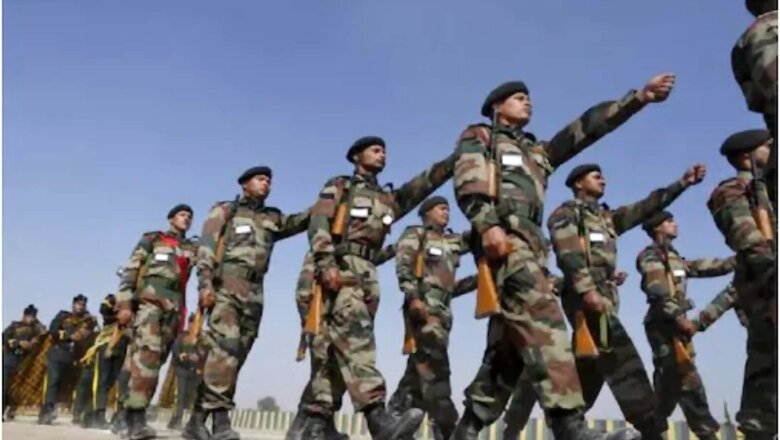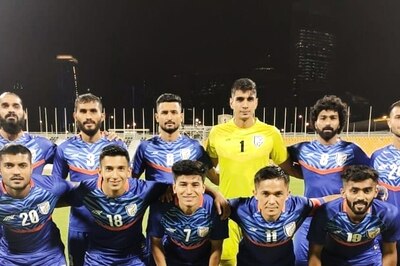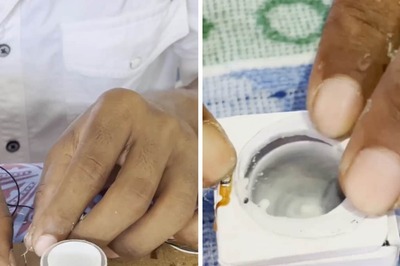
views
A study by a committee of defence experts has recommended a common doctrine for training the armed forces and joint drills involving Junior Commissioned Officers (JCO) and others in the triservices, officials have told News18.com, a move aimed at achieving better integration in training of the army, navy and the Indian Air Force (IAF) personnel.
The development comes in the backdrop of authorities setting in motion India’s ambitious theatreisation plan for critical operational synergy among the three services. But there are indications that it will take at least three years to put the system in place, with four commanders-in-chief working on the structures.
Meanwhile, the focus of the defence establishment remains on enhancing synergy among the three forces at least in the areas of training and logistics, which are considered relatively low-hanging fruits.
Why the move is important
While the three services have specific roles, joint training is believed to be critical for the achievement of a common military objective.
At present, cadets of the three services undergo basic military training at the National Defence Academy (NDA), before getting into service-specific specialisation in the last two of the total six semesters there.
After getting commissioned as officers, the next time they train together is at the Defence Services Staff College when they are promoted to Major/Lieutenant Colonel and equivalent levels. This could be 10-12 years, or even more, after they are commissioned. Other senior-level courses for joint training of officers follow with their empanelment to higher ranks.
“…the higher command course or the staff college courses are conceptual courses. There is a lack of training at the troop-level,” a senior services officer said.
“An enhanced joint training is essential for better coordination and cooperation among the rank and file of the three defence services,” the officer said.
The proposal for joint training of JCO and other ranks in the army with their equivalents in other services will help fill this void, he said. A joint training doctrine is essential, the officer added, as it will formulate a common policy and lay down concepts and training methodologies of how troops of the three services can function in various operations.
A second defence officer told News18.com that it is imperative that jointness in training is achieved not just at training institutes but also on the field. “This is important so that the tactics formulated in these institutions could be tested and validated for the effectiveness.”
How the study was carried out
The study to enhance jointness in the training of the three services was commissioned in October last year, 35 years since another study was conducted on this topic in 1986, News18.com has learnt.
The Committee of Experts (CoE) that conducted the recent study comprised top officers from the Army’s Training Command (ARTRAC) in Shimla, the IAF training command in Bengaluru and the Kochi-based Southern Naval Command of the navy.
This CoE examined and reviewed the functioning of triservices training institutes such as the National Defence College (NDC), Armed Forces Training Institutions (AFTIs), and war colleges at Mhow, Goa and Secunderabad.
CoE members visited all joint training establishments and deliberated with stakeholders before presenting the key aspects of the study to the Chiefs of Staff Committee (COSC) in February this year. It recommended changes in framework, processes and curriculum with an eye on enhancing jointness through training.
According to defence sources, CoE members looked into the professional military education training (PMET) curriculum taught to cadets at NDA as well at higher levels, such as at the Defence Services Staff College, College of Defence Management and NDC. A comparison was also drawn between the Indian PMET and those of the United States and China, before arriving at the recommendations.
Other recommendations
According to sources, a recommendation by the committee was to ensure a proper balance between theory and on-field training at defence institutes, and assessment of officers and cadets on specific learning outcomes.
The committee suggested that a vision and guidance for a joint PMET should be given by the Chief of Defence Staff and COSC, and that the training should focus on strengthening critical thinking capabilities of officers of the armed forces.
The study also recommended that there should be separate schools for “joint operations and war fighting”, and a department of leadership and behavioural studies under the existing military training institutes and also those planned – such as the Indian Defence University in Gurugram that is yet to open since its foundation stone-laying ceremony in 2013.
The CoE report recommended setting up new joint training services institutions (JSTIs) to enhance integration among the services.
The Integrated Defence Staff headquarters, the sources said, had already established several JSTIs – including on military law, intelligence, nuclear biological chemical warfare (CBRN), and music and catering – for jointly training officers in these spheres.
A separate PMET for officers not empanelled for the next rank, centres of excellence in various training establishments, and aligning military education with the National Education Policy (NEP) are among the recommendations.
“Faculty development and international training of officers and leveraging potential of the alumni who’ve had such training in the past, adequate forward area and international study tours are the other recommendations,” a third source told News18.com.
Read all the Latest News , Breaking News and Ukraine-Russia War Live Updates here.



















Comments
0 comment